Quality Productions, Protection and Recovery of the Internal Areas of Aspromonte: the Role of Truffles
Abstract
The purpose of this article is to examine the potential of truffle production and its market in the Aspromonte area. Through interviews with leading operators, collectors, transformers, retailers and restaurateurs, the strengths and weaknesses of the sector, the risks to the external environment and the opportunities offered by the economic system, as well as the needs raised by the operators who in various ways deal with truffles in the Calabria Region was considered. The results show that truffles are natural biological products and play an important role in the management of woodlands: if they are present they are a formidable indicator of environmental health. The results showed that the truffle supply chain can contribute to the promotion of growth strategies for Calabria as indicated among the objectives of the 2030 Strategy Agenda in Goal 11.a Session 1, point 1 which aims at the conservation, redevelopment and promotion of poor or fragile areas with qualitatively significant cultural and environmental heritage. The truffle sector's ability to attract new economic flows generated by production activities, from territorial marketing, from fresh or processed product marketing and from services capable of guaranteeing additional income for farmers and supply chain operators was also highlighted. The results finally showed that the use of SWOT analysis in niche food products provides useful indications for regional development planning actions, for marketing activities, for the promotion of sustainable tourism, for the recovery and enhancement of rural buildings and for the food and wine routes that revolve around the production of truffles and the gastronomy based on fresh and / or processed truffles.
Produzioni di pregio, tutela e recupero delle aree interne aspromontane: il ruolo del tartufo
Scopo di questo articolo è esaminare le potenzialità della produzione e del mercato del tartufo nell’area aspromontana. Attraverso interviste ad opinioni leader, operatori, raccoglitori, trasformatori, rivenditori e ristoratori, sono stati messi in luce i punti di forza e di debolezza del comparto, i rischi dell’ambiente esterno e le opportunità offerte dal sistema economico, nonché le necessità sollevate dagli operatori che a vario titolo si occupano di tartufo nella Regione Calabria. I risultati mostrano che i tartufi sono prodotti biologici naturali e che svolgono un ruolo importante nella gestione dei terreni boschivi: se sono presenti rappresentano un formidabile indicatore di salubrità ambientale. I risultati hanno evidenziato, altresì che la filiera del tartufo può contribuire alla promozione di strategie di crescita per la Calabria come indicato tra gli obiettivi della Strategia Agenda 2030, Goal 11.a Sessione 1, punto 1, che punta alla conservazione, riqualificazione e promozione di aree disagiate o fragili con patrimoni culturali e ambientali qualitativamente significativi. Si è inoltre evidenziata la capacità del settore tartuficolo di attrarre nuovi flussi economici generati dalle attività di produzione, dal marketing territoriale, dal marketing del prodotto fresco o trasformato e dai servizi idonei a garantire reddito supplementare aggiuntivo per gli agricoltori e per gli operatori della filiera. I risultati hanno infine mostrato che l'uso dell'analisi SWOT in prodotti alimentari di nicchia fornisce indicazioni utili per le azioni di pianificazione dello sviluppo regionale, per le attività di marketing, per la promozione del turismo sostenibile, per il recupero e la valorizzazione dei fabbricati rurali e per i percorsi enogastronomici che ruotano intorno alla produzione di tartufi e alla gastronomia a base di tartufi freschi e/o trasformati.
Parole chiave
Full Text
PDF (English)DOI: https://doi.org/10.14633/AHR160
Refback
- Non ci sono refbacks, per ora.
Copyright (c) 2019 Agata Nicolosi, Serafino Cannavò, Arturo Guida, Valentina Rosa Laganà, Donatella Di Gregorio

This work is licensed under a Creative Commons Attribution-NonCommercial 4.0 International License.
........................................................................................................................................................................................................................................................................................................................................................
ArcHistoR è una rivista open access e peer reviewed (double blind), di Storia dell’architettura e Restauro, pubblicata con cadenza semestrale dall'Università Mediterranea di Reggio Calabria (Laboratorio CROSS - Storia dell'architettura e Restauro, dAeD - Dipartimento di Architettura e Design).
ISSN 2384-8898
![]()

Comitato scientifico internazionale
Maria Dolores Antigüedad del Castillo-Olivares, Monica Butzek, Jean-François Cabestan, Alicia Cámara Muñoz, David Friedman, Alexandre Gady, Jörg Garms, Miles Glenndinning, Mark Wilson Jones, Loughlin Kealy, Paulo Lourenço, David Marshall, Werner Oechslin, José Luis Sancho, Dmitrij O. Švidkovskij
Comitato direttivo
Tommaso Manfredi (direttore responsabile), Giuseppina Scamardì (direttrice editoriale), Antonello Alici, Salvatore Di Liello, Fabrizio Di Marco, Paolo Faccio, Mariacristina Giambruno, Bruno Mussari, Annunziata Maria Oteri, Francesca Passalacqua, Edoardo Piccoli, Renata Prescia, Nino Sulfaro, Fabio Todesco, Guglielmo Villa
 .
. 


2.jpg)
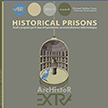
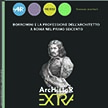
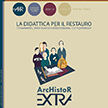

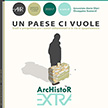
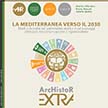
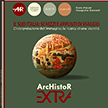
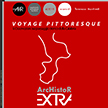
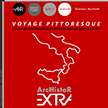
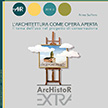
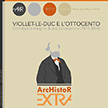
_2.jpg) .
. 
 .
. 

